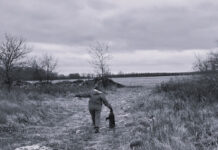Ohio’s deer archery season will open on Sept. 28 and continue through Feb. 2, 2025.
While once considered a novelty, bow hunting has become one of the state’s most anticipated hunting seasons. Its popularity continues to increase and evolve. To understand why, we must examine Ohio’s story of Odocoileus virginianus – the whitetail deer.
When settlers first entered the vast wilderness of the Northwest Territory, deer were common. They were valued for the food and the useful deer hides they provided. As the human population grew, trees were felled for homes and to clear the way for farms which soon replaced much of the woodlands. This ground-clearing increased wildlife’s vulnerability to unrestricted hunting pressure and the deer numbers began to decrease rapidly. By 1904, Ohio’s whitetail was gone.
The deer wasn’t the only animal that faced difficult times during this transitional period. The deep woods and northwestern marshes were transforming into open landscapes. Elk, black bear, turkey, wolves and bobcats were all affected by the rapid changes while some upland animals reaped the benefits. Quail, rabbits and the introduced ring-necked pheasant flourished in this newly created farm country’s edge habitat.
While some point to hunting as the deciding factor in these animals’ demise, we must remember that the term “unregulated” must be added to that description. Though a factor, the real blow was the rapidly changing countryside and the associated loss of habitat. Together, these factors resulted in tumultuous times for wildlife populations.
By 1857, hunting restrictions began to be implemented, but terrestrial wildlife weren’t the only animals suffering. Fish populations were plummeting from their own habitat degradation, as well as the effects of agricultural, industrial and mining runoff and pollution.
In 1873, just 70 years after Ohio’s statehood, the General Assembly created the Ohio Fish Commission. Its job was to turn the loss of the state’s natural fisheries around but the political appointees of that time weren’t prepared to respond to the other issues.
The public outcry and growing awareness of the newfangled aspects of conservation prompted lawmakers and the agency to expand their purview to encompass law enforcement, research, propagation, fish and wildlife management, stream improvement, and pollution investigation.
In 1888, a statute provided for a warden in every county and by 1949, the organization was combined with other resource agencies to become part of the Department of Natural Resources. Eventually, the agency once known as Ohio’s Fish Commission and the Division of Conservation had become today’s Division of Wildlife.
Since its inception, the division’s job has been to conserve and improve fish and wildlife resources and their habitats for sustainable use – not just for hunters and anglers, but for all of us. This mission has encouraged the inclusion of managing all forms of wildlife to help increase aesthetic appeal, reduce conflict and provide recreational use of the renewable resources we all share.
Ohio’s whitetail deer has been of particular focus, and its loss in many eastern states had stung early conservationists. A beautiful and valuable animal, its social and economic impact is ingrained in our history. A dollar is called a buck thanks to early tanned hide transactions, the buckeye nut was named for its resemblance to a deer’s eye, The Ohio State University Buckeyes grew from that namesake and Ohio natives will forever be known as Buckeyes. Ohio’s official state mammal is the whitetail deer and the buckeye is the state tree.
With such a perceived value, professional wildlife biologists were hired to carefully manage the whitetail deer. During the 1920s and the 1930s, there was a limited restocking program begun while at the same time, a natural migration was occurring from neighboring states. By 1943, the state’s first modern-era hunting season was held in Pike, Adams and Scioto counties with 164 bucks killed. By 1956, sightings of the animal had been made in all 88 counties.
During the mid-1990s, whitetail numbers exceeded 500,000 animals for the first time, spread across Ohio’s 44,825 square miles. This carefully monitored history and increasing accessibility of the state’s only big game animal helped spur the interest in bow hunting.
If you ask hunters why they’ve taken up a bow, you’ll hear the words “solitude, skill, rewarding, and challenging.” There’s also a more relaxed feel to the long archery season which adds a tranquil feel to the entire experience. Bow hunting may also offer opportunities to access properties that are less suitable for gun hunting while also providing cities with the ability to control encroaching deer numbers with less potential risk.
Archery can be practiced inexpensively and some clubs and organizations cater to the sport, adding to its popularity. They offer shooting opportunities, friendship, and, regardless of your skill level, a willingness to help. Manufacturers have also done their job promoting the activity through marketing and equipment development to steer you into the gear you need – or think you need. A great bonus to the process is that hunting license and permit sales and the special taxes on sporting equipment continue to fund wildlife research, restoration, property purchases, and necessary enforcement.
The ancient art of archery has evolved into part of our modern outdoor hunting heritage; a legacy we can leave for future generations. With continued management and support, Ohio’s whitetail deer will be here for them, too.
“Wildlife and its habitat cannot speak, so we must and we will.”
– Theodore Roosevelt













